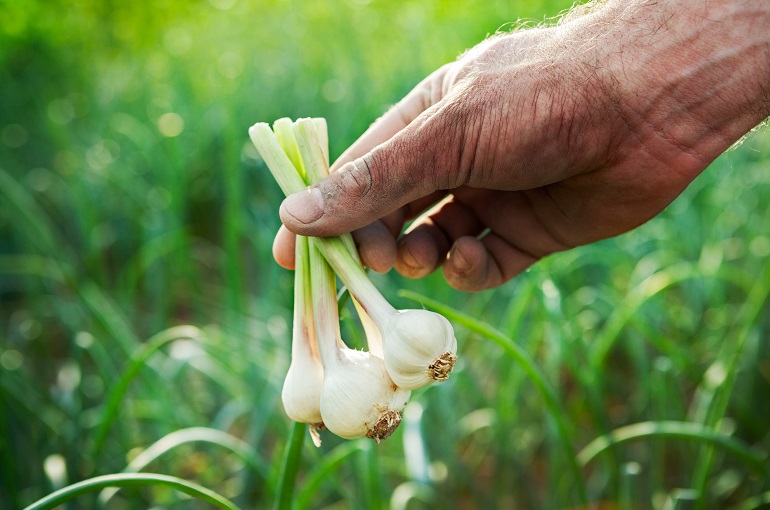Growing garlic in your backyard

This post is also available in:
This post is also available in:
![]() Deutsch (German)
Deutsch (German) ![]() हिन्दी (Hindi)
हिन्दी (Hindi) ![]() Ελληνικά (Greek)
Ελληνικά (Greek)
More and more people like to grow their own fruits and vegetables for a hobby, for self-satisfaction, and for better control over what they eat. However, growing fruits and vegetables in your backyard have some risks, do’s and dont’s, and there are some things you certainly need to avoid.
Things to consider when growing garlic:
- Garlic temperature requirements are medium. They need temperatures from 13 to 24 °C (55-75 °F) and plenty of sunlight to thrive. Frost or extremely hot temperatures may prevent the cloves from developing. In most garlic-producing countries, the best period to start garlic cultivation is during the second half of autumn or early spring.
- If you don’t want to start your garlic plants from seeds, you may easily plant garlic cloves directly by using those you may already have in your kitchen, or you may consider buying them from a legitimate seller to be sure that they are coming from a variety that thrives in your area. Make sure to keep the seeds moist until germination. Otherwise, the germination rates will probably be low, and you will lose time. You can use turf as a substrate for optimum aeration. If you wish to grow more than one plant, leave at least 8 cm (3.15 inches) space between each plant. The planting procedure is relatively easy as you only have to dig them into the soil at 2.5-5 cm (1-2 inches) depth, depending on the clove size. Keep in mind that garlic requires a cold treatment of 5°C ( 40 °F) for about 2 months to start bulbing. In addition, bulbs from previous cultivation may need to be stored in a cool place (10 °C or 50 °F) with a relative humidity of 50-60% before planting.
- Garlic plants generally have middle to high tolerance in drought but do not like soggy soil. Thus, you may avoid excessive irrigation. On average, garlic needs irrigation one time per week. This, of course, is not a rule. In sandy soils that normally cannot hold sufficient amounts of water close to roots, you may need to add more water. On the other hand, in heavy clay soils, you may have the exact opposite problem and you should irrigate with less water (smaller doses). What is essential, though, is that the plants need, on average, over 12 hours of sunlight exposure daily to develop well-shaped cloves.
- When it comes to garden cultivation, many gardeners prefer to apply well-rotted manure or compost during the growing period to cover plants’ needs in nitrogen and potassium.
- Garlic matures and can be harvested 3 to 8 months from planting. The plants are ready by the time they lean on the ground, having more of the ⅓ of their leaves drought out. If all things go well, you may be able to harvest up to 3-10 well-shaped cloves from every healthy and thriving plant.
Further reading:
Garlic Plant information and Variety selection
General information and nutritional value of Garlic
Growing garlic in your backyard
Growing Garlic Commercially – Complete Growing Guide for Garlic from Start to Finish
Soil Requirements, Soil Preparation, and Planting of Garlic
Garlic Water Requirements and Irrigation Systems








































































